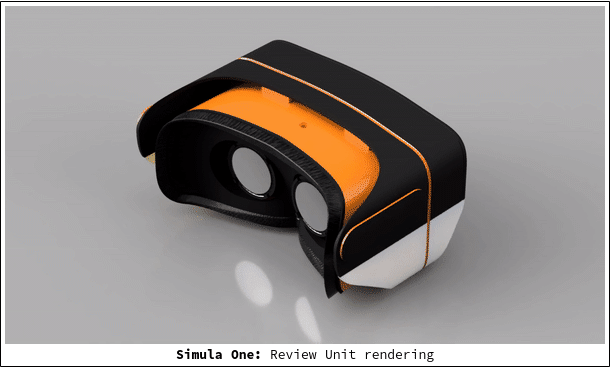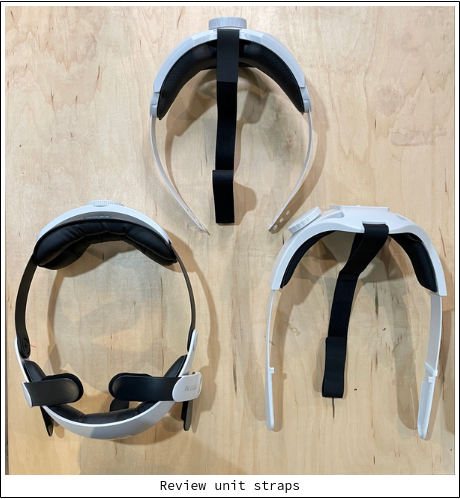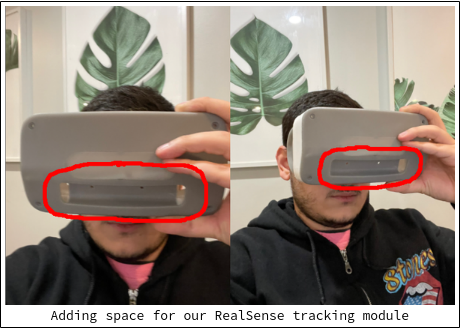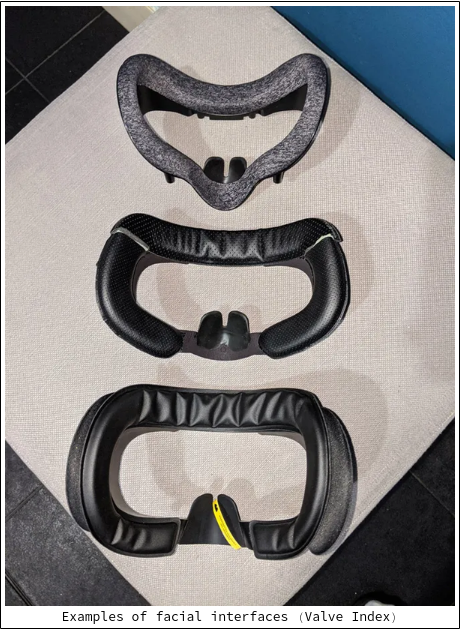We've recently made progress on our review unit exteriors. As mentioned in a previous post, our review units will be stripped down versions of the Simula One, intended to demonstrate integrated headset functionality. So far we're still on pace to having a functioning review unit by June 8th, if not earlier at some point in May.

As might be apparent, the review unit is beginning to look somewhat different than the original prototype we've been using on our website and marketing. The rest of this post outlines those differences.
Coloration
Our review unit has a slightly different color scheme (partially to signify it's just a beta): the whole top and bottom halves are now black and white respectively. We are still keeping our orange flairs though.
Headset straps

We've changed our strap mechanism to support 3rd-party Oculus straps (as a quick way to get stronger/sturdier strap). Our favorite so far is a halo strap, which allows you to push the headset up and out of the way of the eyes:

Camera & RealSense slots

-
RealSense module. We have added a slot in the bottom-front of the headset for an Intel RealSense module, which we're using as a temporary solution for positional tracking. (Note the final headset will likely include our own tracking system, but we're using a RealSense for quicker prototyping).
-
Camera slot. The camera slot has moved from the bottom half to the middle of our headset, which makes room for the Intel RealSense below it. Moving the cameras up higher causes the AR passthrough images to be more in-line with our eyesight, making AR Mode a more natural experience. (Note however that our actual review unit will likely not include cameras).
Facial interface & eye relief
We've augmented the facial interface (i.e. the part of headset between lenses and the user's eyes) to be more ergonomic: it now better fits human faces, block out light better, and is less flat.

This has led us to stripping our original eye relief adjustment mechanism: instead, eye relief will now be handled by swapping out different facial foams with varying thicknesses. We decided to make this tradeoff not just for the review unit but for our final headset as well, since this approach is simpler, lowers both cost and headset weight, and is more rigid.
Dimensions
Our review unit protrudes an additional 30mm from the forehead versus the original prototype. This is due to our 3 lens design taking up more space than was anticipated in our original prototype (which was constructed around a single Fresnel lens design). This unfortunately makes our headset longer, but is worth the tradeoff since the beefier lens design allows us to achieve higher pixel density (=> better text quality).
IPD adjustment motors
We have been testing linear servos to be used for IPD adjustment, but have found them to be too weak. We will likely move to a rack and pinion mechanism for IPD adjustment.